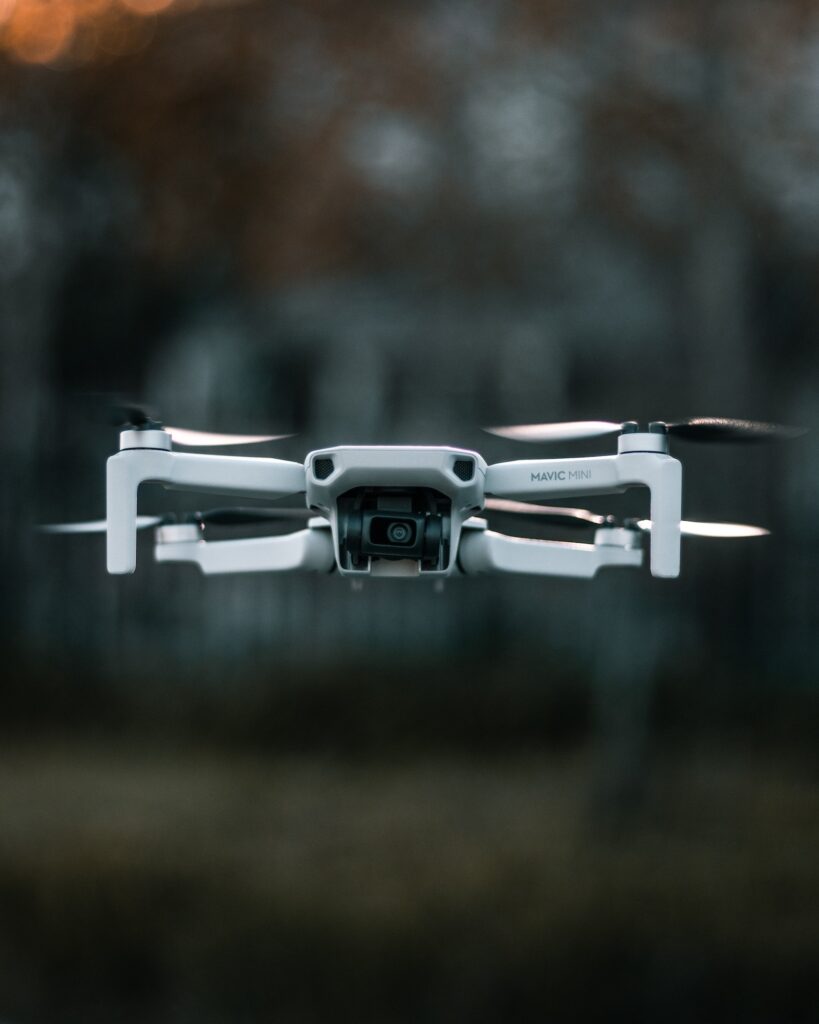Have you ever wondered how industrial automation has revolutionized manufacturing processes? The use of advanced technologies to control and monitor processes has led to increased efficiency, productivity, and profitability for businesses. Among these technologies is motion control solutions that have become increasingly popular in recent years due to their ability to enhance precision, accuracy, and speed in various industrial applications.
Motion control technology involves the use of computer-controlled systems to regulate the movement of machines or systems. These solutions can be applied in various industries such as automotive, aerospace, food processing, packaging and labeling among others. In this article, we will explore the benefits of motion control solutions for industrial automation while also examining the latest trends and innovations in this field. We will also delve into some of the challenges that businesses may face when implementing motion control solutions while providing practical solutions on how to overcome them.
Motion Control Solutions: The 4 Points of the Future Of Industrial Automation
Understanding Motion Control Technology
The section focuses on comprehending the underlying principles and components of technology that facilitate the precise positioning and movement of machinery in manufacturing processes. Motion control technology refers to a subfield of automation engineering that deals with the regulation, analysis, and execution of complex movements in industrial machinery. The applications of motion control solutions span across various industries such as automotive, aerospace, robotics, electronics, food processing, medical devices, packaging and printing.
The components that constitute motion control systems typically include motor drivers/controllers, sensors for position feedback (e.g., encoders), actuators (e.g., linear or rotary motors), power supplies/cables/connectors and software/hardware controllers.
The working principle behind these systems involves converting electrical signals into mechanical energy via motors/actuators which then interact with other mechanical components to perform tasks such as positioning or motion control. One advantage of using motion control solutions is their ability to improve productivity by increasing precision rates thereby reducing errors while also enhancing safety through automated protocols.
Benefits of Motion Control Solutions for Industrial Automation
The advantages of incorporating precise and efficient movement systems in the manufacturing process are numerous, demonstrating how motion control technology can enhance productivity, reduce costs, and optimize quality control. Improved efficiency is one of the primary benefits of motion control solutions for industrial automation.
By utilizing advanced motion control technologies such as servo motors and drives, manufacturers can achieve higher accuracy levels with faster response times than traditional mechanical methods. This results in increased production speeds and reduced cycle times.
In addition to improved efficiency, cost savings are another significant benefit of implementing motion control solutions in industrial automation. Motion control technologies enable manufacturers to reduce waste by optimizing processes and materials usage. Precise positioning capabilities also allow for tighter tolerances during production which reduces scrap rates and rework expenses.
Furthermore, predictive maintenance features offered by modern motion controllers help minimize downtime due to equipment failure, decreasing overall maintenance costs. Overall, incorporating motion control solutions into industrial automation provides a competitive edge by increasing productivity while lowering operating costs.
Latest Trends and Innovations in Motion Control
In the past decade, the market for advanced motion control technologies has grown exponentially with an estimated global worth of $19.2 billion by 2025, highlighting a significant demand for innovation in this field. One of the latest trends is smart motion control, which utilizes artificial intelligence and machine learning to optimize system performance. This technology enables machines to adapt to changing conditions and operate more efficiently while reducing downtime and maintenance costs.
Another trend in motion control solutions is integrated systems that combine multiple functions into a single platform. This approach streamlines operations by reducing the number of components required while increasing flexibility and customization options. Integrated systems are particularly beneficial in industries where space is limited or where high precision is required, such as medical device manufacturing or semiconductor production.
They also improve safety by minimizing human interaction with machinery and automating hazardous tasks. As technology continues to advance, we can expect further innovations in motion control solutions that will transform industrial automation processes.
Overcoming Challenges in Implementing Motion Control Solutions
Challenges faced in implementing advanced technologies for optimizing system performance and increasing efficiency within industrial processes require a comprehensive analysis of existing infrastructure, identification of potential gaps in technology, and development of strategies to mitigate risks associated with adopting new systems.
One such challenge is integration challenges as integrating motion control solutions into existing manufacturing systems can be difficult due to technical complexities and the need for specialized expertise. This poses a significant challenge for companies that want to adopt motion control solutions but lack the resources or technical knowledge necessary to integrate them effectively.
Another major challenge is cost optimization as implementing motion control solutions requires significant financial investment. The cost of acquiring hardware, software, and other peripheral devices needed to support these solutions can be high, making it difficult for some organizations to justify their implementation.
Additionally, ongoing maintenance costs must also be factored into any implementation strategy as these systems require regular updates and repairs over their lifetime. Therefore, overcoming these challenges requires careful planning and consideration of all factors involved in adopting new technologies while balancing the benefits against the costs involved in doing so.
Frequently Asked Questions
What is the cost of implementing motion control solutions in industrial automation?
When it comes to implementing motion control solutions in industrial automation, cost analysis and return on investment considerations are crucial. While the initial investment may seem high, the long-term benefits of increased productivity, improved accuracy, and reduced downtime can ultimately lead to significant cost savings.
A thorough cost analysis should consider not only the upfront expenses but also ongoing maintenance costs and potential downtime that could impact production. Additionally, return on investment considerations should take into account factors such as increased efficiency and the potential for new opportunities in the marketplace.
Ultimately, a well-planned implementation strategy with careful consideration of these factors can lead to a successful integration of motion control solutions into industrial automation processes.
Can motion control solutions be integrated with existing automation systems?
Compatibility concerns and integration challenges are common issues that arise when attempting to integrate motion control solutions into existing automation systems. As these solutions become more prevalent in industrial automation, it is important to carefully consider the compatibility of various hardware and software components.
Additionally, integration challenges can arise due to differences in communication protocols or programming languages. To successfully integrate motion control solutions with existing automation systems, careful planning and testing must be performed beforehand to ensure seamless operation without compromising overall system performance.
It is crucial for engineers and technicians to have a thorough understanding of both systems in order to identify potential compatibility issues and develop effective solutions for successful integration.
What industries can benefit the most from motion control solutions?
Industries that require precision and accuracy in their operations can benefit from motion control solutions. Aerospace applications, for instance, necessitate the use of high-precision motion control systems to ensure safety and efficiency.
Medical technology applications also require precise positioning and movement of delicate instruments during surgical procedures.
Additionally, industries that involve repetitive tasks such as packaging, assembly lines, and material handling can increase productivity with the implementation of motion control solutions. These systems offer accurate positioning, speed control, and synchronization of multiple axes of movement resulting in an optimized workflow.
Ultimately, the integration of motion control solutions can significantly improve operational efficiency and reduce costs across various industries.
Are there any safety concerns associated with implementing motion control solutions?
Safety measures and risk assessment are critical concerns when implementing any industrial automation system. The incorporation of motion control solutions in an industrial setting requires careful consideration of the potential hazards associated with the technology.
The use of mechanical or robotic systems can potentially lead to accidents resulting from unexpected movements, collisions, or malfunctions. Therefore, it is essential to implement safety measures such as emergency stop buttons and barriers that prevent access to hazardous areas.
Additionally, conducting a thorough risk assessment can help identify potential hazards and develop appropriate mitigation strategies to ensure the safe implementation of motion control solutions in an industrial environment.
How can motion control solutions improve energy efficiency in industrial automation?
Real-time monitoring and predictive maintenance are two key ways in which energy efficiency can be improved in industrial automation. Real-time monitoring allows for the continuous tracking of energy usage, enabling operators to identify areas where energy consumption is excessive and take steps to optimize processes accordingly.
Predictive maintenance utilizes data analytics and machine learning algorithms to forecast equipment failures before they occur, reducing downtime and minimizing the need for reactive repairs that consume more energy. By implementing these strategies, manufacturing facilities can achieve significant reductions in their overall energy consumption while improving productivity and profitability.
Conclusion
In conclusion, motion control solutions have a significant impact in the field of industrial automation. The technology enables precise movement and control of machines, improving efficiency and productivity while reducing costs. Motion control provides several benefits such as increased accuracy, faster processing times, and enhanced safety measures. Innovations in motion control include advanced robotics and intelligent systems that can adapt to changing environmental conditions.
Moreover, implementing motion control solutions is not without challenges. Factors such as cost, compatibility with existing systems, and training employees on new technologies must be taken into account during implementation. However, these challenges can be overcome through proper planning and collaboration between manufacturers and end-users.
Overall, motion control technology continues to evolve rapidly, providing new opportunities for automation in various industries. As the demand for precision increases across all sectors of manufacturing processes, motion control will remain at the forefront of industrial automation solutions. To sum up this idea: “Motion control is not just a luxury but a necessity for efficient industrial processes.”





